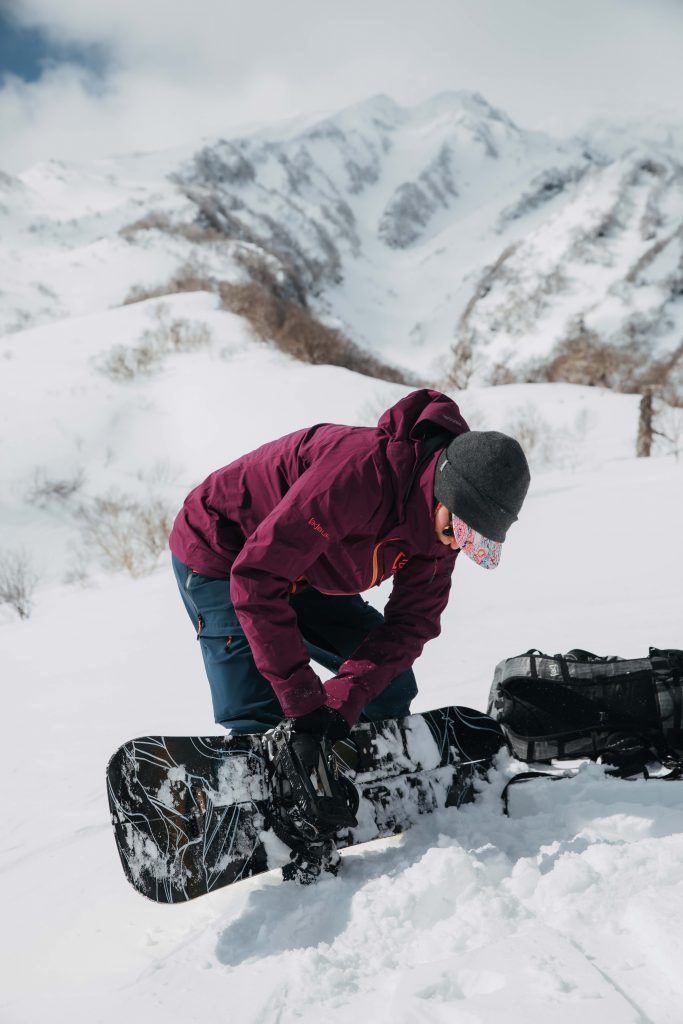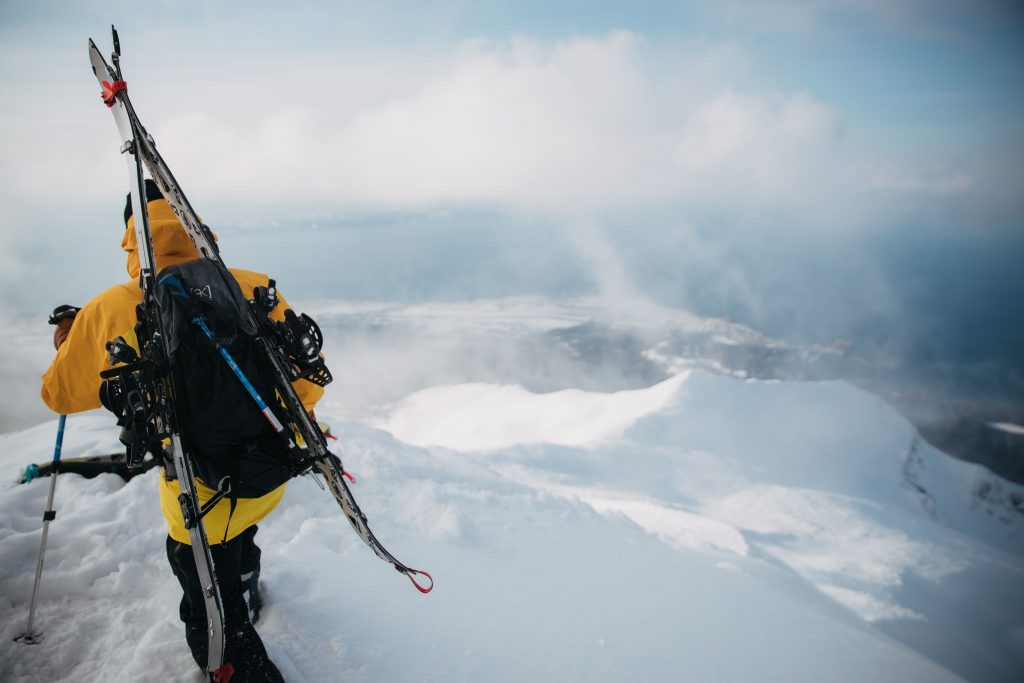<span style="color: #9e9e9e;">Skiers aren’t the only ones planning to hit the backcountry in droves this winter. With design improvements making it easier than ever, snowboarders are also venturing off-piste thanks to the burgeoning category of splitboards — snowboards that “split” apart for touring with skins for the ascent, and then re-attach for the shred back down.
Innovative bindings let riders easily switch modes from tour to shred, with improved attachment mechanisms snapping the board back together quickly, with little loss in performance over regular boards. Add COVID-19’s resort restrictions and it’s easy to see why consumers are snapping up the category.
“We’re seeing a significant increase in demand for splitboards compared to past seasons, with product moving faster and earlier than we’ve ever seen before,” said Alex Quitiquit, senior hardgoods buyer at Backcountry.com. “This season, we’ll likely see consumer demand out-pace the overall supply of splitboard-related products.”
Added Steve Osborn of Evo Gear, which operates eight brick & mortar outlets: “Splitboards have been selling much earlier than prior years as there has been a shortage in the market and consumers are likely trying to get what they need before supply dries up.”
Following are a few trends and other updates from three of the category’s leaders, as well as binding maker Karakoram.

Jones Snowboards
Jones Snowboard’s founder Jeremy Jones is as smitten with splitboards as any consumer. “It’s a very grounding experience and a place where I feel most alive and happy,” said Jones, also a Teton Gravity Research producer.
He uses that stoke to create innovations that help others experience the same, which this year has resulted in record sales. “The equipment has come a long way with improvements in design,” he said, adding Jones’ focus has always been on tighter connection of the two skis, weight reduction without losing downhill performance, durability, and sustainability.
The big trend, he added, is that there are more options for everyone out there. “We continue to expand our line to accommodate kids, women and bigger people,” he said. “We’ve also brought in more variety of models like our freestyle-focused Mountain Twin and our Surf Series to complement our all-around traditional freeride shapes.”
The Jones Solution continues to be its top seller, he added, as it’s “a good all-arounder that we always bring out latest material and manufacturing technology into first.” “It’s the most tested, tweaked and refined board in the line,” he said.
As for sales this year, they’ve been strong, he said, but regional. “It’s been interesting to see how different countries are affected by the pandemic,” he said. “In North America, we’ve seen a serious spike in sales, but in Europe, and the rest of the world, sales are off and they seem worried about the future. People in the U.S. seem to be embracing the “YOLO” mentality in terms of recreation spending.”
Regardless, for splitboard advocates, in particular, he stressed embracing the sport safely. “People are going to be getting out more because of COVID-19, so it’s super important to do it safely,” he said. “Just because you are a ripper at the mountain doesn’t make you an expert in the backcountry. It requires education, humility and respect. Get educated, read the local avi report and learn basic touring protocols.”
Voile
Voile, which introduced the world’s first splitboard in 1991 and sells both direct and through a large retail network, has been riding a wave of sales as well this season. “We’ve definitely seen a big increase across the board,” said the company’s Andrew Montoya. “I think there’s going to be a lot of new users heading into the backcountry.”
Of the company’s seven different models, the directional Revelator and Revelator BC have sold out. Of note is the BC model, which features scales on the base in lieu of having to attach skins. “The scales have been popular,” he said. Also moving well is the Aspen-cored Spartan and Paulownia core Spartan Ascent, a lightweight backcountry-oriented splitboard.
The company has noticed an uptick in binding sales as well, he added — especially its new Lightspeed, which features a new method of attaching pinholes to the touring bracket. “No one’s able to find bindings at all this year,” Montoya said. “The whole binding category is moving well.”
With its manufacturing facility in Salt Lake City, the company has been able to meet most of the increased demand, he added, “but it’s been a pretty crazy year.”
Burton
Since splitboards are all about going up under your own power, Burton’s technological efforts have largely centered around weight savings. “We’ve been focused on opportunities to reduce weight where possible,” said senior product line manager Lesley Betts. “It’s such a critical benefit when touring — less weight equals less tired.”
In particular, for 2021 the company removed the top sheet material from all of its Family Tree boards including all of its splits and is now using a pre-cured, hard glass top sheet for strength and structure while reducing weight. “We’ve also integrated the hardware for the split clips to remove drilling through to the base for a better glide on your descent and a cleaner skin adhesion,” Betts said.
Burton has also focused on providing a splitboard offering in each specific style of riding within the freeride world with its split models aligned to its solid models. Examples include the Pow Wrench Split, a short, surfy splitboard for powder; the Hometown Hero Split, a versatile offering built to do everything (also available in a lightweight X version); and the Straight Chuter Split for big mountain, steep lines. The company also removed its men’s and women’s lines in its family tree and now offers a non-binary size range in each model.
“We’re always working towards improving the experience for users and the ease of accessing the mountains via splitboarding,” said Betts. “And we’re excited to continue product development in this category.”
As for sales, Betts added that its splitboard package, consisting of the Flight Attendant splitboard, Hitchhiker binding, x Black Diamond Compactor poles, and precut Splitskins, is selling well. “Splitboarding has been growing year-over-year for the past few seasons, and we anticipate more growth again this year due to COVID-19, and people are looking to get outside on their own away from crowds,” Betts continued.
Karakoram Bindings
Even companies specializing in splitboard bindings are seeing an uptick. “We’re seeing a remarkable growth of enthusiasm for splitboarding, and backcouuntry snowboarding as a whole,” said Russell Cunningham of Bend, OR, binding manufacturer Karakoram. “The technology and culture have evolved together, and we are now seeing the entire discipline of splitboarding hit a new level of refinement, as well as equipment performance.”
Karakoram’s product line centers around high-performance snowboarding, as well as achieving the utmost in touring efficiency, speed and ease of transitions between climbing and riding. Added Cunningham: “Our current binding line is the best we’ve ever produced — the PrimeX and Nomad models, in particular, take splitboarding to new levels of end-user experience.”
















